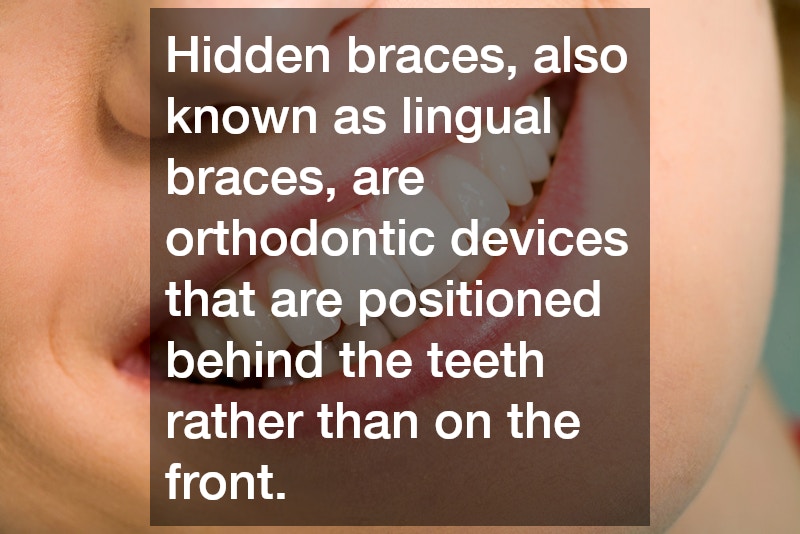What Are Hidden Braces and How Do They Work?
What Are Hidden Braces and How Do They Work?
In today’s world of advanced dental technology, individuals seeking orthodontic care have more options than ever. Among the various types of braces available, hidden braces have gained popularity due to their discreet nature and effective treatment outcomes. But what exactly are hidden braces, and how do they work? In this blog post, we delve into the fascinating world of hidden braces, discussing their distinct features, how they compare to traditional braces, and the benefits they offer.
Understanding Hidden Braces
Hidden braces, also known as lingual braces, are orthodontic devices that are positioned behind the teeth rather than on the front. This unique placement makes them virtually invisible to others, offering a cosmetic advantage for those who are self-conscious about their appearance during dental treatment. Hidden braces function similarly to traditional braces, using brackets and wires to apply gentle pressure on the teeth, gradually moving them into the desired position. This method not only straightens teeth but also aligns them to improve oral functionality.
Aesthetic Advantages Over Traditional Braces
One of the primary reasons people choose hidden braces is for their aesthetic appeal. Unlike traditional braces, which are quite visible, hidden braces provide a subtle solution to orthodontic treatment. For adults who spend a lot of time in professional or social settings, having an unobtrusive dental appliance can significantly boost confidence. Furthermore, hidden braces eliminate the possibility of discoloration or stains on the front of the teeth, which sometimes occurs with conventional metal braces. As a result, individuals can maintain a natural-looking smile throughout treatment.
Technology Behind Hidden Braces
Hidden braces are custom-made for each patient, tailored specifically to fit the contours of their dental arch. Advanced computer technology is used to design and produce personalized brackets and wires that fit comfortably and effectively. During the initial consultation, orthodontists take detailed impressions of the patient’s teeth, which are then used to create a 3D model. This model guides the crafting of the braces to ensure a perfect fit, ensuring that the treatment proceeds efficiently. This personalized approach contributes to the overall success of the orthodontic treatment.
The Treatment Process and Maintenance
The process of receiving hidden braces typically begins with a comprehensive consultation with an orthodontist, who will evaluate the patient’s oral health and determine suitablity. Once deemed appropriate, the custom braces are fitted, and patients continue with periodic adjustments as needed. It’s noteworthy that hidden braces require a bit more dedication to oral hygiene, as their placement may make cleaning more challenging. However, with the use of specialized tools like interdental brushes and water flossers, maintaining oral hygiene is manageable. Orthodontists typically provide guidance on the best practices to ensure optimal results.
Potential Drawbacks to Consider
Despite their many advantages, there are a few considerations to keep in mind when choosing hidden braces. They may not be suitable for individuals with certain bite issues or very small teeth, as placement might be challenging. Additionally, the initial adjustment period can involve discomfort or speech difficulties as the tongue may need time to adapt. It’s also worth mentioning that hidden braces tend to be more expensive compared to traditional options due to the complexity of their design and installation. However, for those who value discretion, the investment in hidden braces can be well worth it.
Conclusion
Hidden braces present a compelling option for those seeking an effective yet discreet orthodontic solution. With their ability to be customized and their nearly invisible nature, they offer a unique blend of functionality and aesthetics. While there are some challenges to consider, including cost and initial adjustment issues, the advantages often outweigh these drawbacks. For individuals prioritizing an unobtrusive treatment journey, hidden braces provide a revolutionary way to achieve the desired smile. Consulting with an experienced orthodontist can help determine if hidden braces are the right fit for your orthodontic needs.







